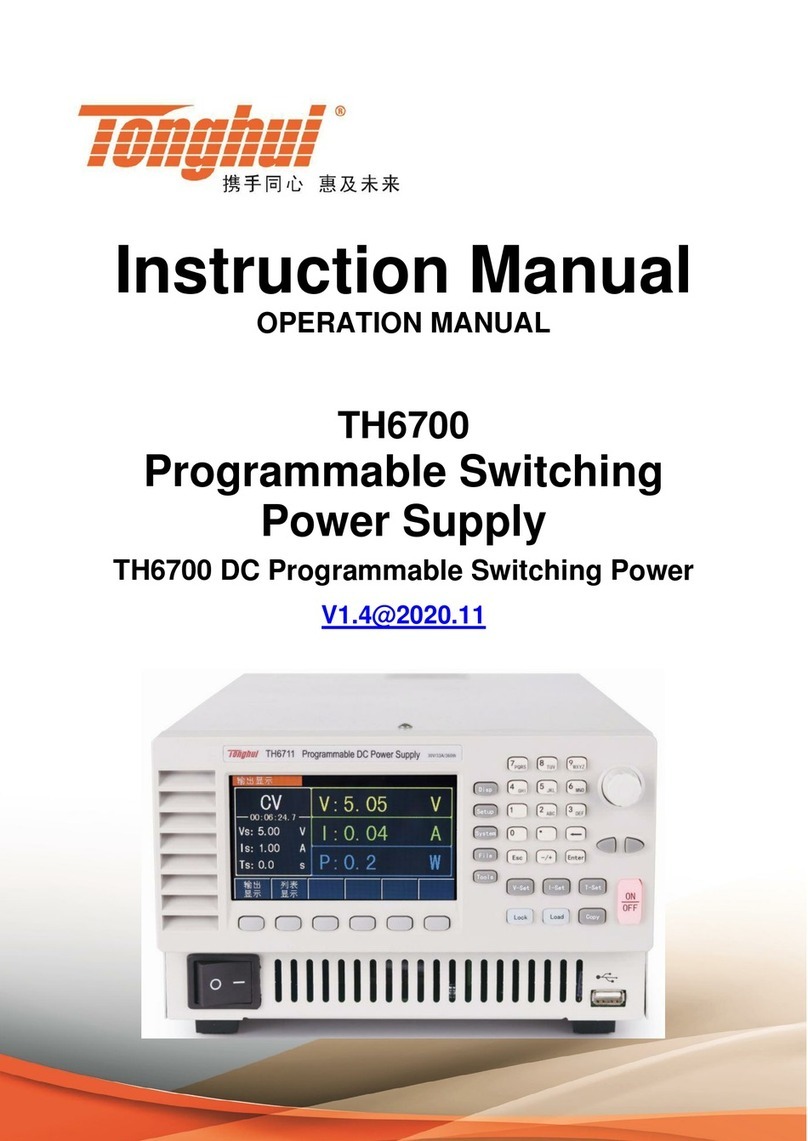
H6700A Instruction Manual
3.6.3 Power-on Output .................................................................................................23
3.6.4 Online Mode.......................................................................................................24
3.6.5 External Logic.....................................................................................................24
Chapter 4 Correct output of the instrument .........................................................................................25
4.1 Output Side................................................................................................................ 25
4.2 Interface Schematic..................................................................................................... 27
4.3 Instrument Series Output.............................................................................................28
4.4 Instrument Parallel Output...........................................................................................30
4.4.1 Host in one - parallel............................................................................................ 30
4.4.2 Host in Two-Parallel............................................................................................31
4.5 External Control Outputs.............................................................................................33
4.5.1 CV External Voltage ............................................................................................ 33
4.5.2 CV External Resistor Rise.................................................................................... 34
4.5.3 CV External Resistance Drop ............................................................................... 34
4.5.4 CC External Voltage ............................................................................................ 34
4.5.5 CC external resistor rising....................................................................................35
4.5.6 CC External Resistance Drop ...............................................................................35
Chapter 5 Interfaces and Communication ...........................................................................................37
5.1 LAN ..........................................................................................................................37
5.1.1 LAN remote control system.................................................................................. 37
5.1.2 System Configuration ..........................................................................................37
5.2 USBTMC................................................................................................................... 37
5.2.1 USBTMC Remote Control System .......................................................................37
5.2.2 System Configuration ..........................................................................................37
5.3 USBCDC................................................................................................................... 37
5.3.1 USBCDC Virtual Serial Port ................................................................................37
5.3.2 System Configuration ..........................................................................................38
5.4 Communication Instruction..........................................................................................38
5.4.1 Basic rules of instruction structure........................................................................ 38
5.4.2 Subsystem commands for the instrument............................................................... 38
5.4.3 Public Commands................................................................................................39
5.4.4 APPLY subsystem command set...........................................................................39
5.4.5 DISPLAY subsystem command set....................................................................... 40
5.4.6 MEASURE subsystem command set.....................................................................40
5.4.7 OUTPUT subsystem command set........................................................................41
5.4.8 SEHSE Subsystem Command Set......................................................................... 43
5.4.9 SOURce subsystem command set......................................................................... 43
5.4.10 SYSTEM subsystem command set........................................................................47
Chapter 6 Technical Parameter Indicators........................................................................................... 54
Chapter 7 Warranty and Changes ....................................................................................................... 59
7.1 Warranty ....................................................................................................................59
7.2 Instruction Manual Change Record .............................................................................. 59
Chapter 8 Appendices .......................................................................................................................60
8.1 Instrument Warning Code............................................................................................ 60
8.2 Instrument Error Code................................................................................................. 60
8.3 Digital Display Comparison Table................................................................................ 61





























